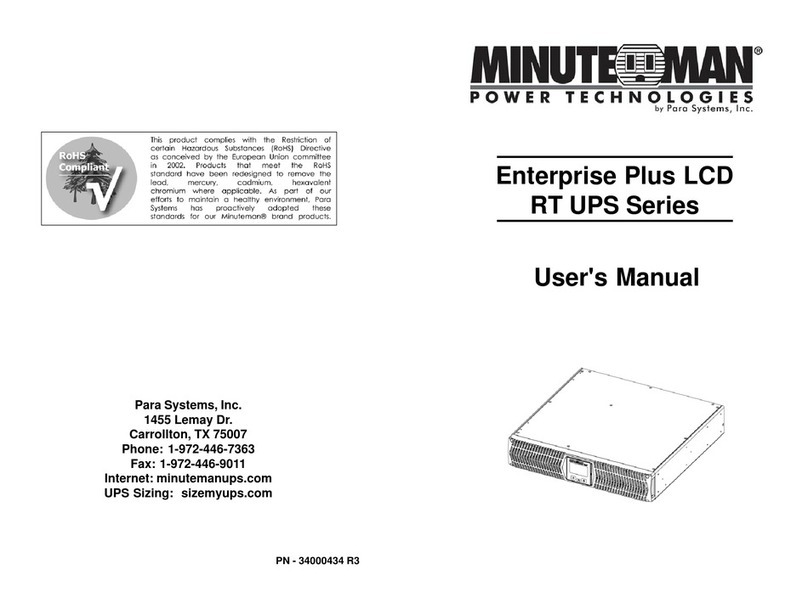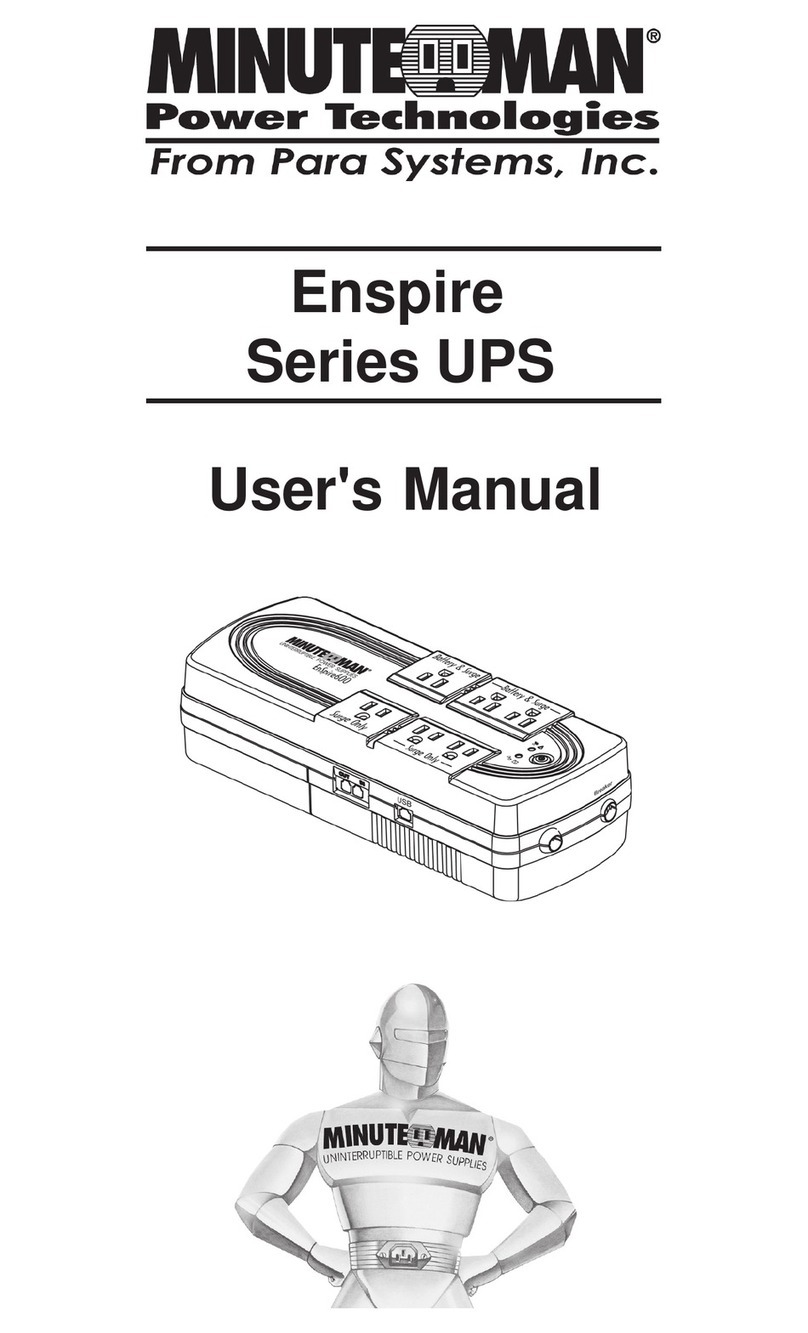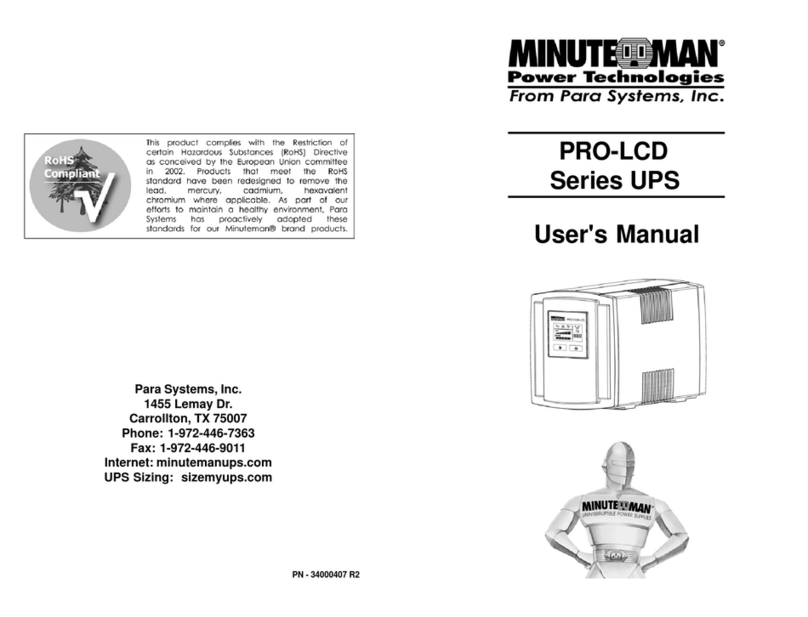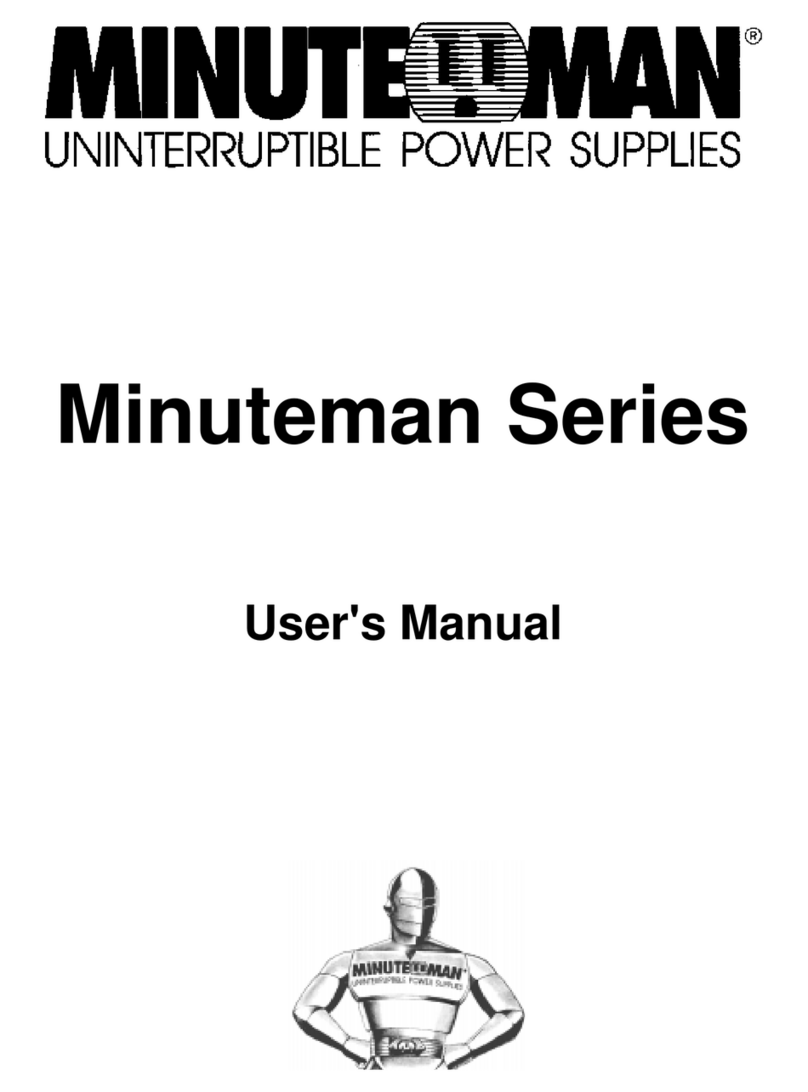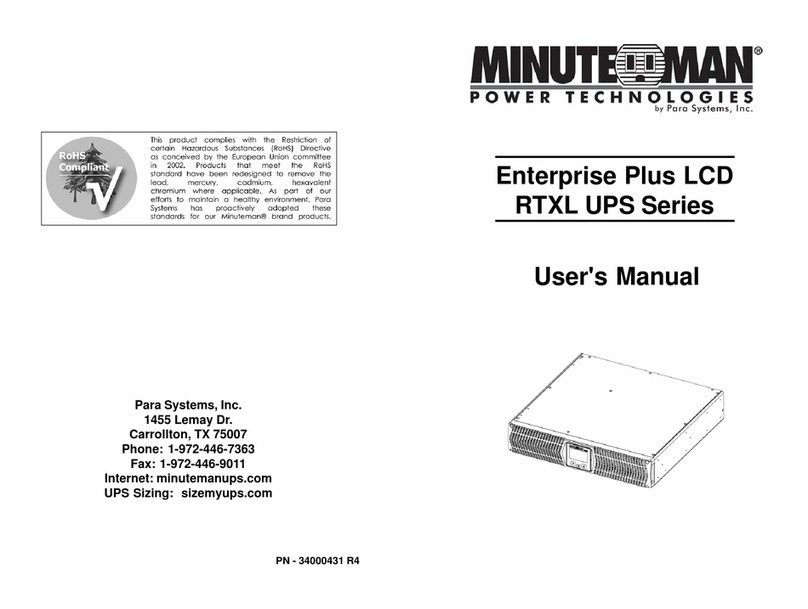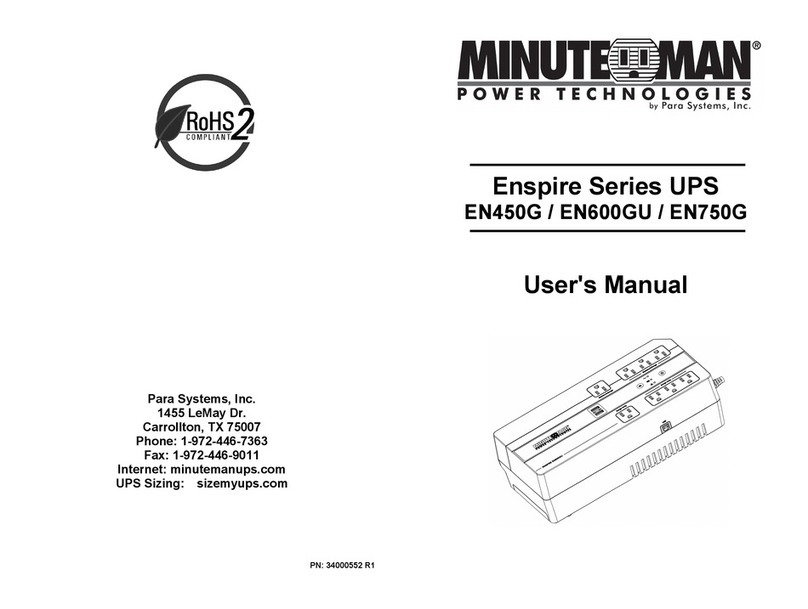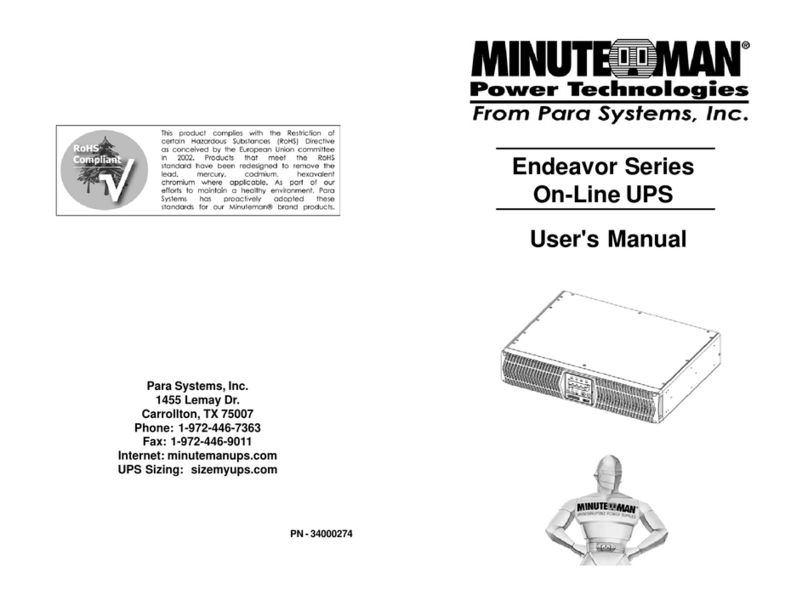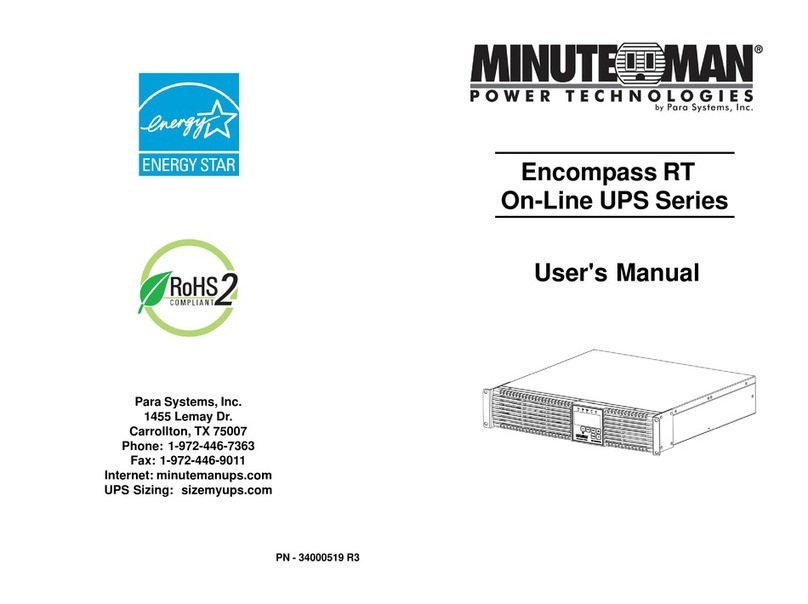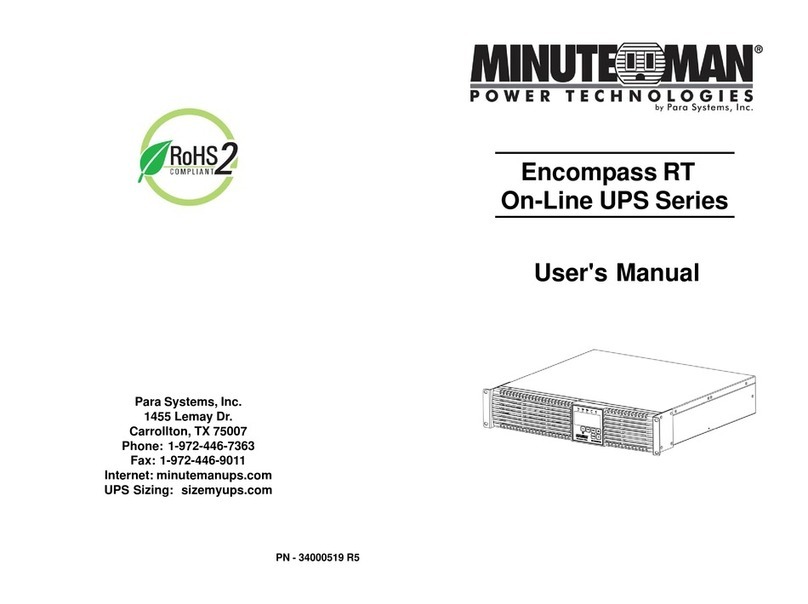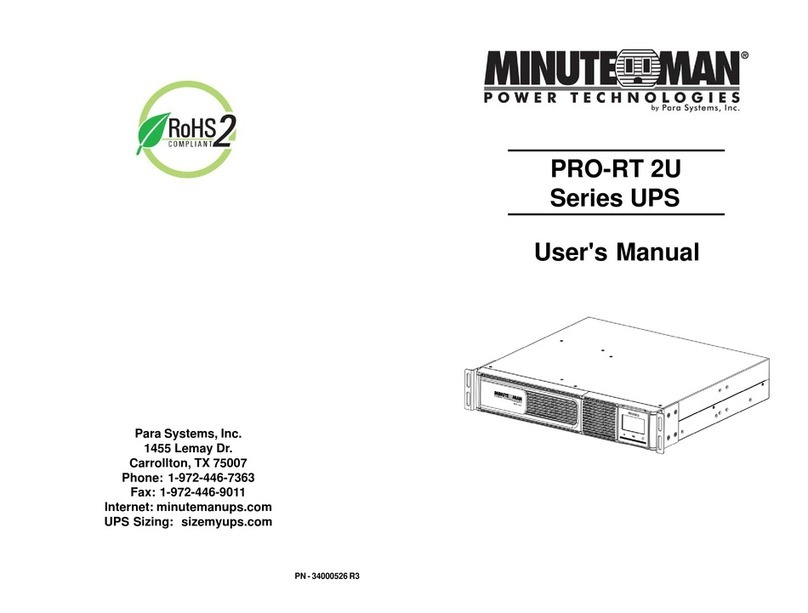4
English
AfterremovingyourUPS fromitscarton, itshouldbeinspectedfor damagethat
may have occurred in shipping. Immediately notify the carrier and place of
purchase if any damage is found. Warranty claims for damage caused by the
carrierwillnotbe honored. The packing materials that your UPS was shipped
in are carefully designed to minimize any shipping damage. In the unlikely
case that the UPS needs to be returned to the manufacturer, please use the
original packing material. Since the manufacturer is not responsible for ship-
pingdamageincurredwhenthesystemis returned, the original packing mate-
rialis inexpensive insurance. PLEASE SAVE THE PACKING MATERIALS!
Receiving Inspection
NOTICE: Thisequipment has been tested and found to comply with the limits
for a Class B computing device in accordance with the specifications in Sub-
partJof Part 15 of FCC Rules and theClassB limits for radio noise emissions
fromdigital apparatussetoutintheRadioInterferenceoftheCanadianDepart-
ment of Communications. These limits are designed to provide reasonable
protection against such interference in a residential installation. This equip-
mentgeneratesandusesradiofrequencyandifnotinstalledand usedproperly,
that is, in strict accordance with the manufacturer's instructions, this equip-
ment may cause interference to radio and television reception. If this equip-
ment does cause interference to radio or television reception, which can be
determinedbyturningtheequipmentoff andon,theuseris encouragedto tryto
correcttheinterferencebyoneormoreofthefollowingmeasures:
Re-orientthereceivingantenna.
Relocatethecomputerwithrespect to the receiver.
Movethe computerawayfromthe receiver.
Plugthecomputerintoadifferent outlet so that the computer and receiver
areondifferent branch circuits.
Shieldedcommunications interface cables mustbeusedwith this product.
WARNING: Changes or modifications to this unit not expressly ap-
proved by the party responsible for compliance could void the user's
authoritytooperatetheequipment.
NOTE: TheseUPSsareshippedwiththebatteriesdisconnected. Thebatter-
ies must be connected before putting these UPSs into service. Refer to Sec-
tion 3 "Installation" for connecting the batteries.
